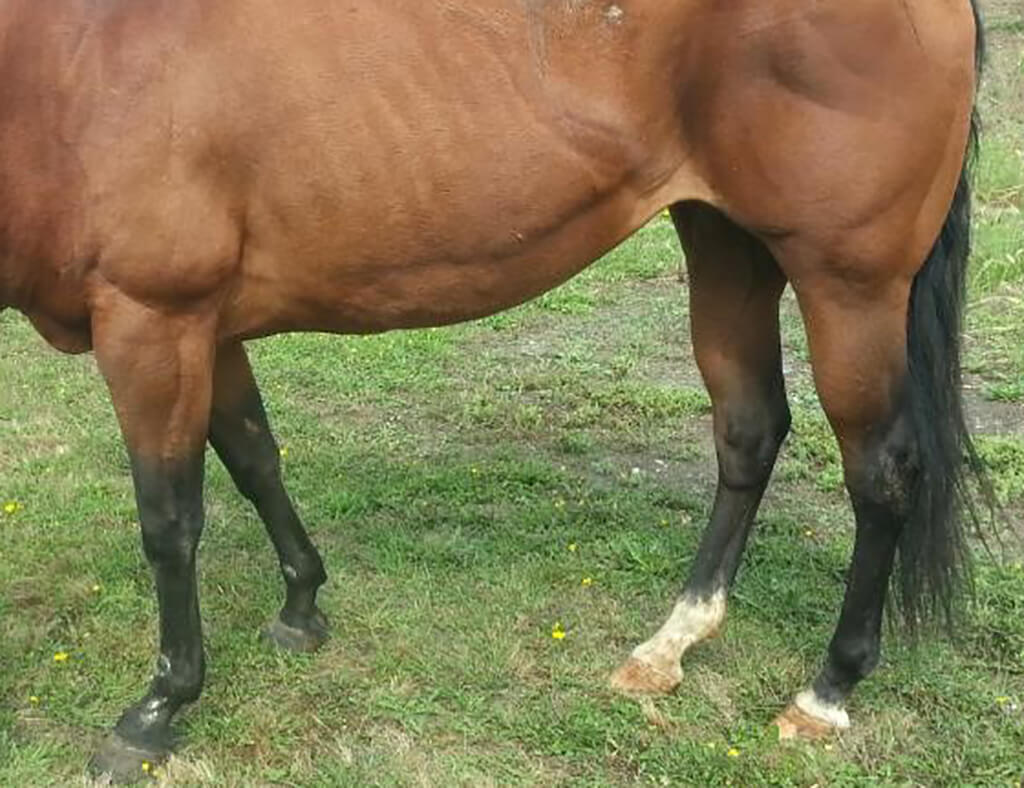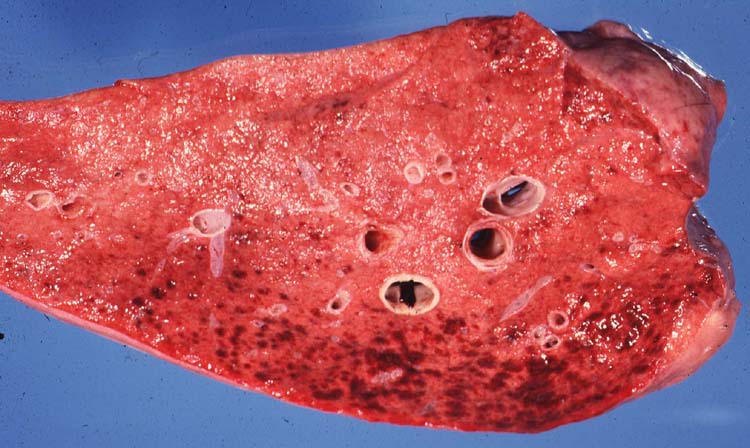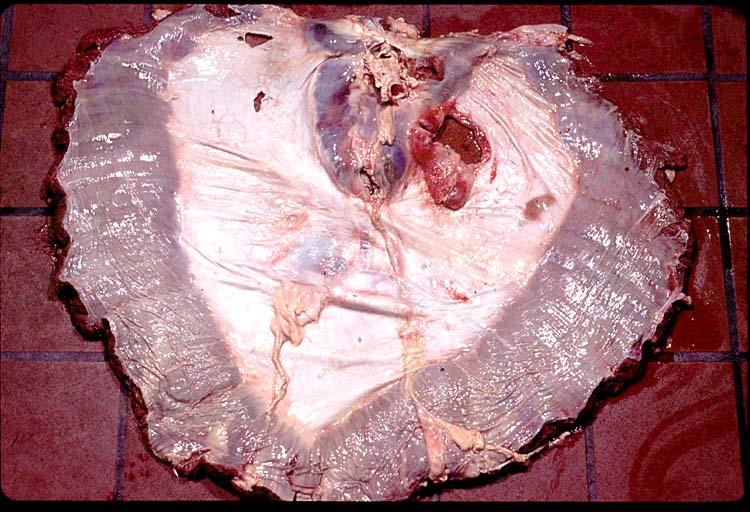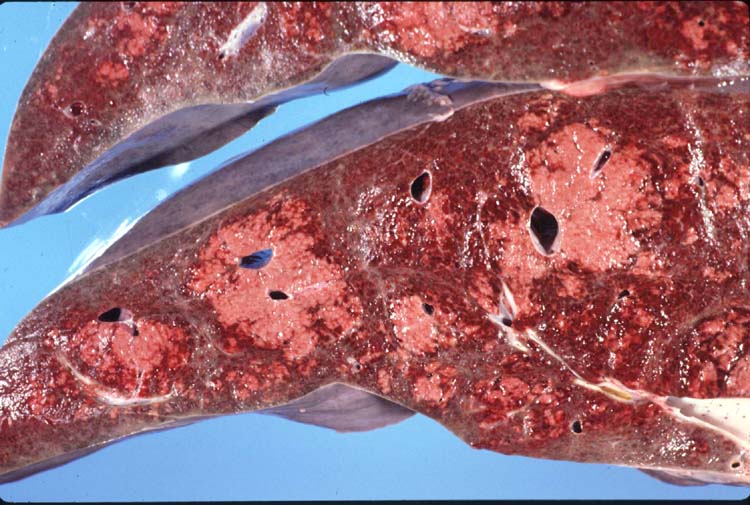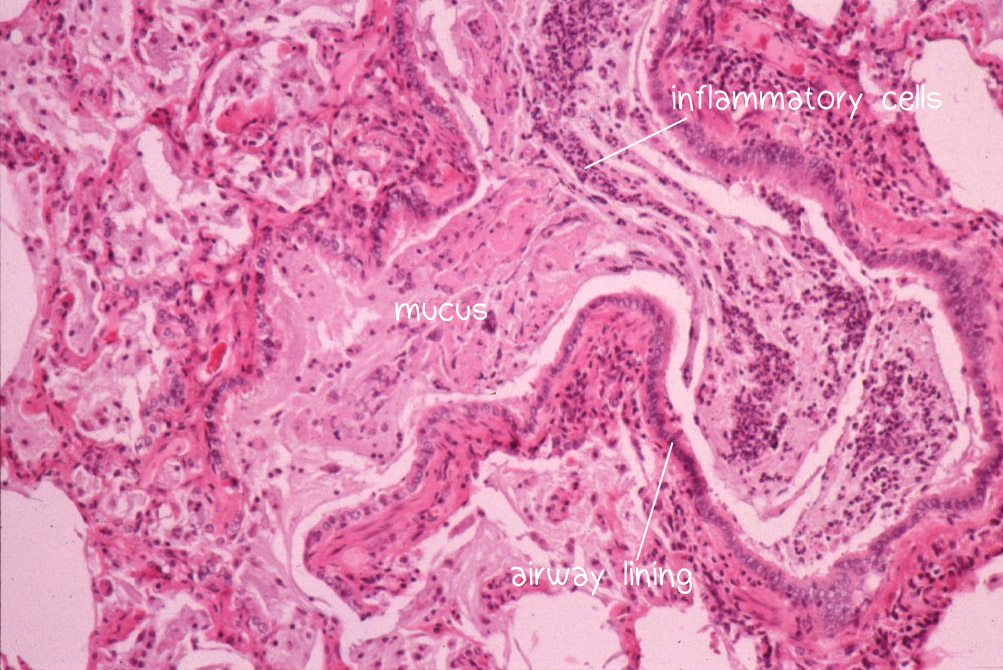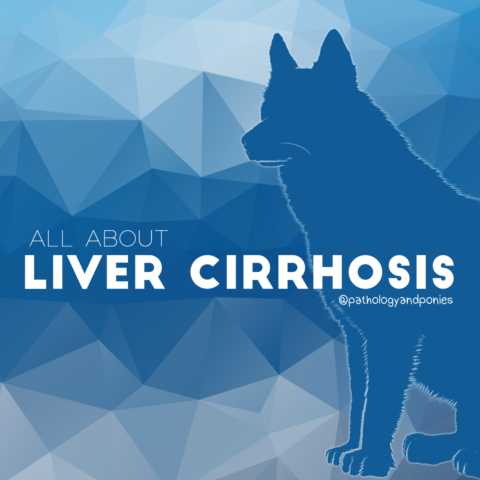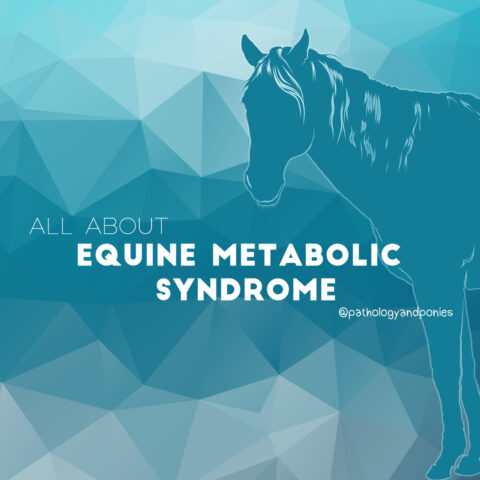Today’s path rounds are on 𝐫𝐞𝐜𝐮𝐫𝐫𝐞𝐧𝐭 𝐚𝐢𝐫𝐰𝐚𝐲 𝐨𝐛𝐬𝐭𝐫𝐮𝐜𝐭𝐢𝐨𝐧, otherwise known as heaves!
𝐖𝐡𝐚𝐭 𝐢𝐬 𝐢𝐭?
𝐑𝐞𝐜𝐮𝐫𝐫𝐞𝐧𝐭 𝐚𝐢𝐫𝐰𝐚𝐲 𝐨𝐛𝐬𝐭𝐫𝐮𝐜𝐭𝐢𝐨𝐧 is a condition of the lungs in horses, which is similar to human asthma. In this disease, the airways are sensitive to allergens, causing them to constrict and prevent airflow through the lung. In chronic cases, the airways may also become obstructed by overproduction of mucus, or thickening of the airway walls.
𝐖𝐡𝐨 𝐠𝐞𝐭𝐬 𝐢𝐭?
As mentioned previously, this is a disease seen in horses, typically mature horses. These horses typically have an “allergy” or sensitivity to mold spores or hay dust, which triggers airway obstruction.
𝐖𝐡𝐲 𝐢𝐬 𝐭𝐡𝐢𝐬 𝐚 𝐩𝐫𝐨𝐛𝐥𝐞𝐦?
At the microscopic level, the 𝐛𝐫𝐨𝐧𝐜𝐡𝐢𝐨𝐥𝐞𝐬, the small airways of the lung, often contain mucus and inflammatory cells that are reacting to the allergen. Around the bronchioles, the muscle that controls their diameter is 𝐡𝐲𝐩𝐞𝐫𝐭𝐫𝐨𝐩𝐡𝐢𝐞𝐝 (thicker), because every time the allergen is encountered, they contract. Ultimately, both of these factors prevents adequate airflow through the lungs.
Due to inadequate airflow, horses often present with 𝐢𝐧𝐜𝐫𝐞𝐚𝐬𝐞𝐝 𝐫𝐞𝐬𝐩𝐢𝐫𝐚𝐭𝐨𝐫𝐲 𝐞𝐟𝐟𝐨𝐫𝐭, because they are trying desperately to get as much airflow in and out of their closed off lungs as they can. Horses will often wheeze, be unwilling to exercise, and may develop a cough or nasal discharge. These clinical signs can be seasonal, depending on dust exposure.
𝐇𝐨𝐰 𝐢𝐬 𝐢𝐭 𝐝𝐢𝐚𝐠𝐧𝐨𝐬𝐞𝐝?
Heaves is typically diagnosed based on the clinical signs and history of the animal. A classic “sign” of heaves is a 𝐡𝐞𝐚𝐯𝐞 𝐥𝐢𝐧𝐞, where the abdomen has a deeply indented line caused by increased abdominal muscle use as the horse tries to breathe. If a veterinarian wants to confirm the diagnosis, they can do a 𝐛𝐫𝐨𝐧𝐜𝐡𝐨𝐚𝐥𝐯𝐞𝐨𝐥𝐚𝐫 𝐥𝐚𝐯𝐚𝐠𝐞, which is where they introduce sterile saline into the lungs and then retrieve it. The saline that comes back will contain inflammatory cells from the lungs that can then be used to diagnose the disease. Neat!
At necropsy, there aren’t too many interesting findings. Sometimes, the mucus accumulations in the small airways can be seen as small, grey dots throughout the lungs. In chronic, very severe cases, we may see thickening of the 𝐝𝐢𝐚𝐩𝐡𝐫𝐚𝐠𝐦, the muscle that allows for your lungs to inflate, because it is having to work extra hard to allow breathing. We may also see 𝐩𝐚𝐬𝐬𝐢𝐯𝐞 𝐜𝐨𝐧𝐠𝐞𝐬𝐭𝐢𝐨𝐧 (low blood flow) in the liver, because of downstream effects that improper airflow through the lungs can cause for the heart.
𝐇𝐨𝐰 𝐢𝐬 𝐢𝐭 𝐭𝐫𝐞𝐚𝐭𝐞𝐝?
The most important treatment is to reduce allergen exposure. Horses should be kept outdoors as much as possible, and eat soaked hay or hay cubes to reduce dust. Sometimes medications like 𝐛𝐫𝐨𝐧𝐜𝐡𝐨𝐝𝐢𝐥𝐚𝐭𝐢𝐧𝐠 𝐚𝐠𝐞𝐧𝐭𝐬 (expand the small airways) are used to counteract the constriction in response to allergens. 𝐂𝐨𝐫𝐭𝐢𝐜𝐨𝐬𝐭𝐞𝐫𝐨𝐢𝐝𝐬 (anti-inflammatory medications) can also be used to reduce the inflammation within the airways.
𝐏𝐡𝐨𝐭𝐨𝐬
1) A horse with a “heave line”.
2) Little grey spots throughout the lungs due to mucus accumulation.
3) Thickening of the diaphragm due to heaves.
4) Passive congestion of the liver due to heaves.
5) Mucus and inflammatory cells in the airway due to heaves.
𝐒𝐨𝐮𝐫𝐜𝐞𝐬
Maxie, G. Jubb, Kennedy and Palmer’s Pathology of Domestic Animals, Volume 2. Sixth Edition.
Rush, B.R. Recurrent Airway Obstruction in Horses. Merck Veterinary Manual 2014.
Photo 1 courtesy of Deben Valley Vet.
Photos 2-5 courtesy of Noah’s Arkive.

